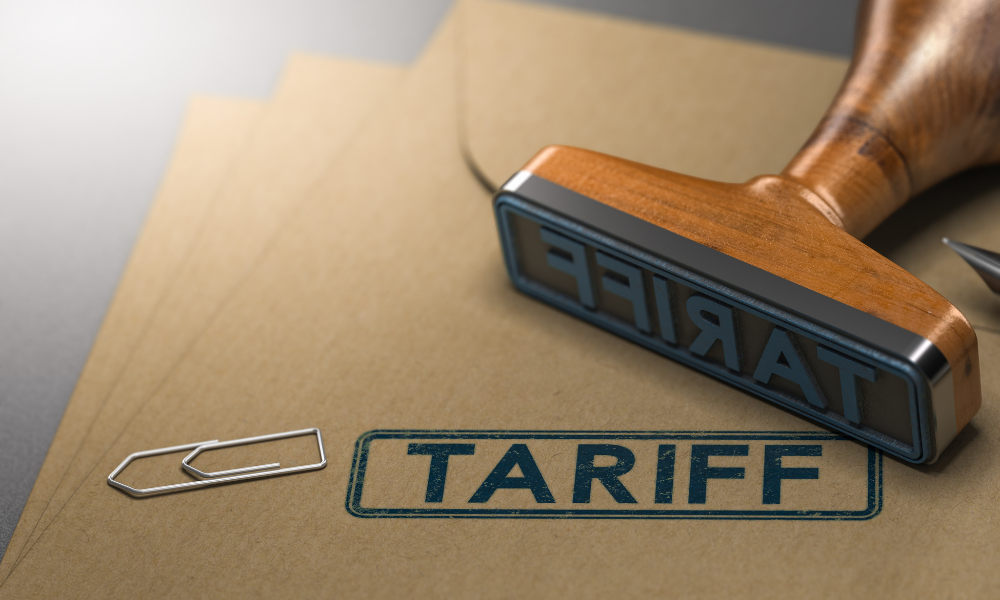

President Donald Trump intends to move ahead with plans on Saturday to impose 25 percent tariffs on Mexico and Canada and a 10 percent levy on China, the White House said, denying a report that he planned to delay the implementation by a month.
“I saw that report, and it is false,” White House Press Secretary Karoline Leavitt told reporters on Friday during the press briefing. “I was just with the President in the Oval Office, and I can confirm that tomorrow the Feb. 1 deadline that President Trump put into place” remains, she added.
Trump has threatened the tariffs over what he says is a failure to crack down on the flow of undocumented migrants and illegal drugs across US borders.
Trump's tariff decision has been closely anticipated by markets and business and political leaders who have scrutinized his every word and action for any indication on whether he would follow through on his threats or merely use them as a starting point for trade negotiations.
US border czar Tom Homan is scheduled to speak with Canadian officials on Friday, according to people familiar with the matter.
The tariffs would mark the first wave of trade levies in Trump’s new term and their impact will ripple well beyond Canada and Mexico as other nations brace for the possibility they may be targeted next and as US businesses await possible retaliatory measures.
Trump campaigned on a pledge to impose sweeping tariffs abroad as part of an expansive agenda that aims to reshape the US economy and its ties with other nations. But the first two weeks of his term spurred uncertainty over whether he would follow through, with some leaders speculating that his threats were intended to just buy him leverage.
Trump has also already ordered up reports, due April 1, on overall trade issues and tariffs, that could lead him to trigger new levies or to quit the continental trade pact he renegotiated with Canada and Mexico in his first term. That agreement is up for review in 2026.
Trump is also promising sectoral tariffs, such as on pharmaceuticals, semiconductor chips, steel, aluminum and copper, which could apply widely to many countries. He has also ordered his administration to investigate whether China complied with a trade deal struck in his first term, setting the stage for tariffs against the world’s second largest economy.
Trump’s 25 percent tariff against two major trading partners and export markets for the US threatens to have dramatic economic consequences and potentially launch a trade war by undermining protections from the US-Mexico-Canada free trade agreement. Earlier this week, Trump suggested that the 25 percent rate could be a baseline and that the tariffs could increase.
In the first 11 months of 2024, US trade with Canada totaled $699 billion and $776 billion with Mexico. Economists warn a trade war would raise the cost of imported materials used by US manufacturers, hike prices for American consumers and redirect or reduce trade flows. The 25 percent rate Trump has set for the North American countries would likely have stark impacts on particular sectors, such as the auto and energy industries.

It's a showdown for the ages as wealth managers assess its impact on client portfolios.

CEO Ritik Malhotra is leveraging Savvy Wealth's Fidelity partnership in offers to Commonwealth advisors, alongside “Acquisition Relief Boxes” filled with cookies, brownies, and aspirin.

Fraud losses among Americans 60 and older surged 43 percent in 2024, led by investment schemes involving crypto and social manipulation.

The alternatives giant's new unit, led by a 17-year veteran, will tap into four areas worth an estimated $60 trillion.

"It's like a soap opera," says one senior industry executive.
RIAs face rising regulatory pressure in 2025. Forward-looking firms are responding with embedded technology, not more paperwork.
As inheritances are set to reshape client portfolios and next-gen heirs demand digital-first experiences, firms are retooling their wealth tech stacks and succession models in real time.
